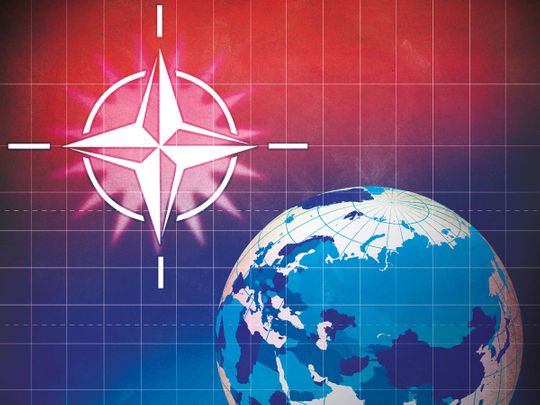
Nato’s anxieties about China were expressed in the communique issued at the end of the summit recently in the Lithuanian capital Vilnius.
Overly critical, the document describes China as a major challenge to the alliance’s interests and security, to which Beijing has reacted sharply. “Any act that jeopardises China’s legitimate rights and interests will be met with a resolute response,” reads a statement issued by China’s EU mission.
As the alliance shifts its focus towards the Western Pacific, Nato members are being cajoled to meet their commitment of allocating 2 per cent of their GDP towards the military.
For now, only 8 out of the 33 members are spending this agreed sum of money for defence, leaving the US to foot much of the bills and offer military guarantees under Article 5 of the Nato charter, which obligates all members to come to military aid if any of the members are attacked.
European members spend more than half of their money buying American hardware. The size of the American military-industrial complex and Nato standardisation pit Europe against unfair American competition that has stymied European capability for independent procurement. With increased dependence on the US, Europe’s ability to defend itself has weakened.
Nato’s grand plan, as it emerges from its 74 years of history, was not only military. The alliance was set up to cleverly draw a war-torn Europe into a US-led world order that the US actively set out to pursue as the leading victorious power of WWII.
The American-led security guarantees served to obtain concessions for the US on issues like market economies and their integration, democratisation, and collective security — a plan that has proven to be an effective arm of the American establishment.
Extending its reach
Founded in 1949 for the defence of North Atlantic countries against the erstwhile Soviet Union, Nato suffered paralysis of purpose as the Cold War ended.
Fast forward to 2023 Nato is now sounding out extending its reach further east into the Western Pacific to counter China’s rise. Many nonetheless concede that Nato’s primary purpose to which it must focus is the North Atlantic.
Nato now constitutes 33 states — up from the original 12 — and has intervened militarily in former Yugoslavia, Afghanistan, and Libya — all out of Nato’s geographical membership. In each case, the consequences are disastrous.
In this backdrop, any suggestion of extending its reach to East Asia smacks of mischief and should thus be treated with scepticism.
China has grown three times faster than the US since the years its economy was opened. It’s already the world’s largest economy in PPP terms and in future is likely to displace the US economy in real terms. Since the global financial crisis in 2008, China has continued to serve as the primary engine of economic growth worldwide.
It’s the world’s biggest trading nation, the largest trading partner of over 120 countries, and a source of common good in much of the world. Its foreign exchange reserves now exceed $3.204 trillion. Moreover, it has not gone into military adventures or alliances.
Late Lee Kuan Yew, the founding prime minister of Singapore, one of the most informed China hands, said that China “China’s growing economic sway will be very difficult to fight”. The Chinese version of the Golden Rule is: He who has the gold, rules.
Sajjad Ashraf served as an adjunct professor at the Lee Kuan Yew School of Public Policy at the National University of Singapore from 2009 to 2017. He was a member of the Pakistan Foreign Service from 1973 to 2008 and served as ambassador to several countries.








